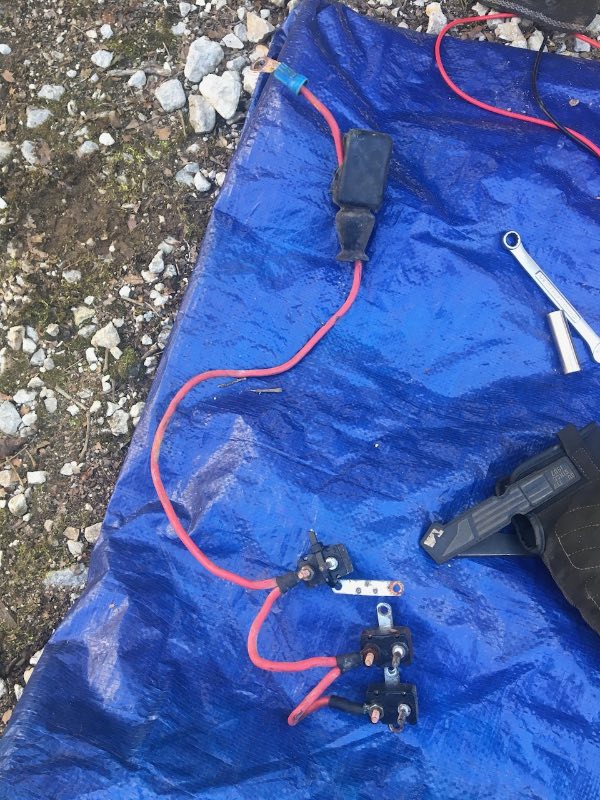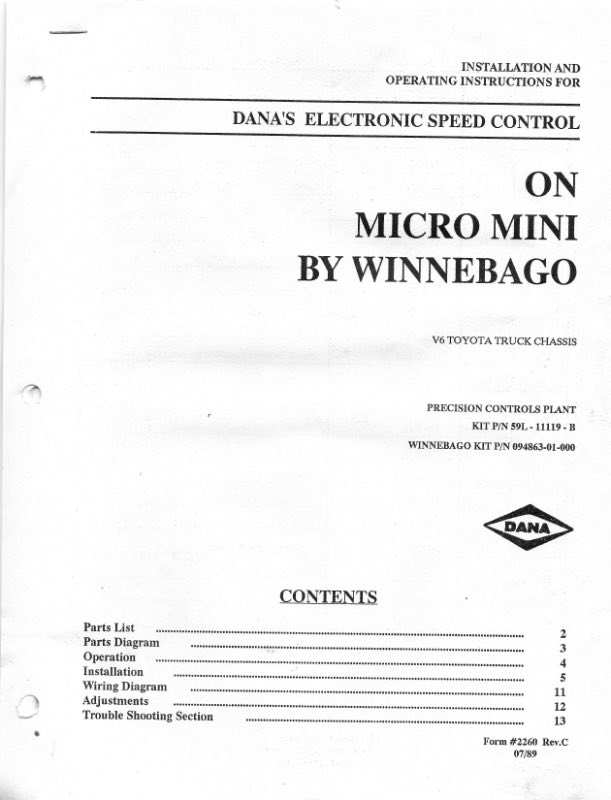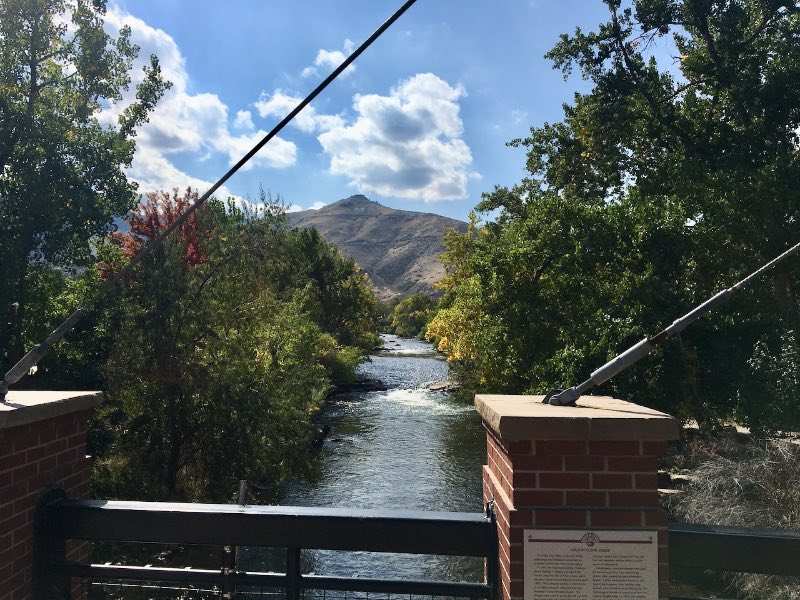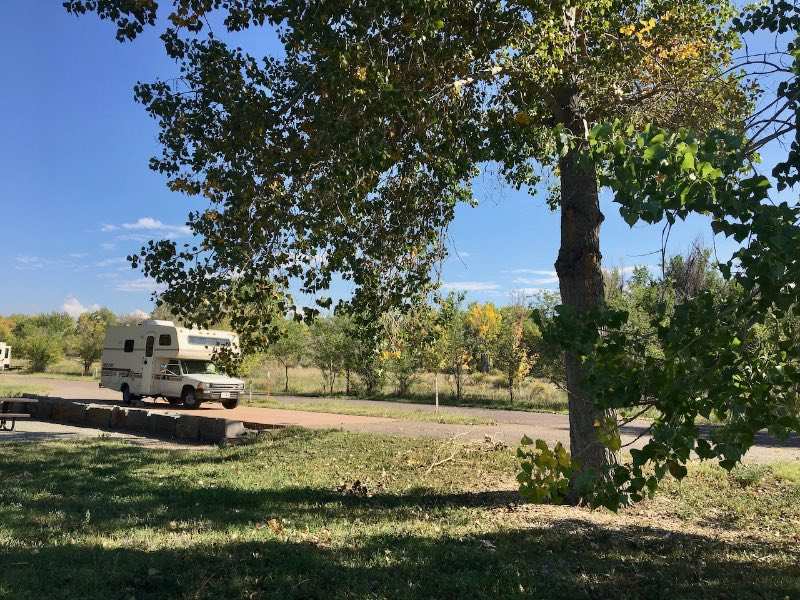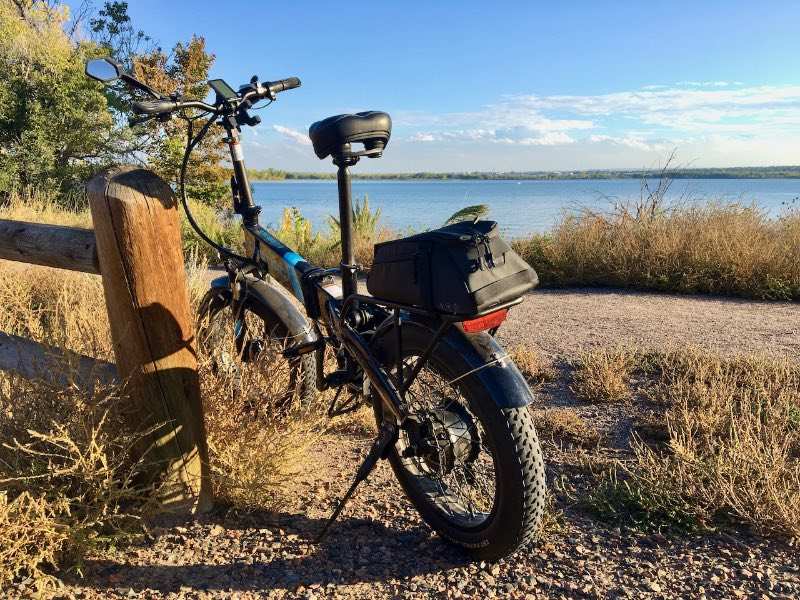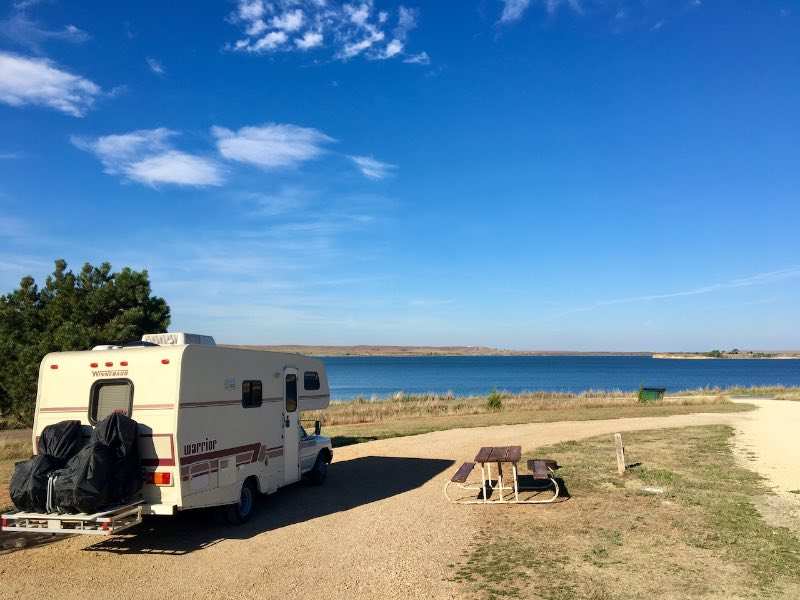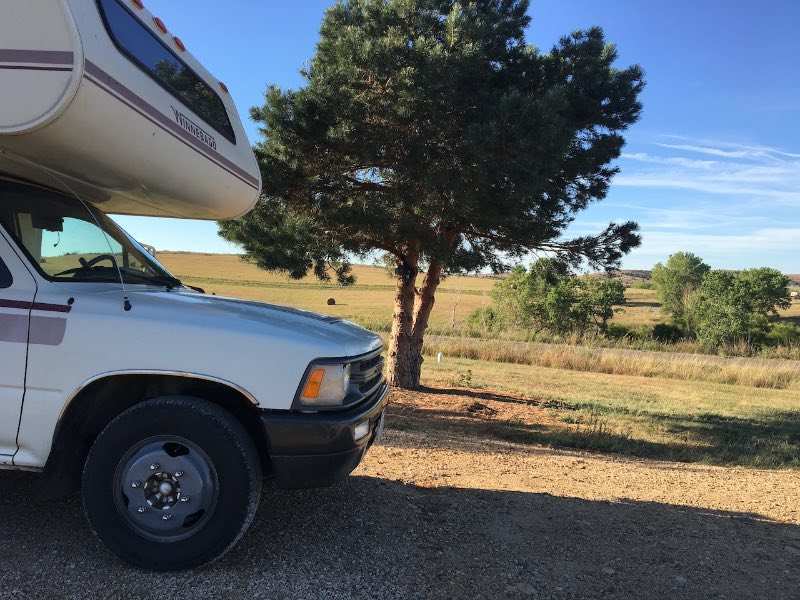-
Posts
632 -
Joined
-
Last visited
Content Type
Events
Profiles
Forums
Gallery
Everything posted by Ctgriffi
-
Great idea! I actually run my 2-way off an inverter while driving now, but I do have to remember to shut it off if parked for awhile...
- 8 replies
-
- power center
- battery
-
(and 3 more)
Tagged with:
-
The third 10ga wire from my battery box is no longer a mystery; it actually went straight to the Norcold fridge and bypassed the power center—looks like Winnebago did that in case a 3-way fridge was installed, which requires significant current (mine is just a 2-way, however).
- 8 replies
-
- power center
- battery
-
(and 3 more)
Tagged with:
-
Probably a number of ways to track down the phantom power loss. I like to use an amp clamp device found on some multimeters (if you've got money to burn and plan on doing a lot of electrical work, buy a Fluke—otherwise you can get a decent Chinese knockoff that'll do the job for under $40). Process would look like this... locate your 12V power center panel and the wires coming off each 12V circuit (usually a separate circuit for lights, water pump, furnace, fan, etc). Use the amp clamp on each wire, one at a time, to see which one is drawing current. If everything is off, the measurement should be basically 0.00 Amps on each of those circuits, so watch for the anomaly. That's where I'd start, anyways.
-
Yeah, they are standard "auto-resetting" circuit breakers but haven't been bypassed—just wasn't showing all of the wiring in the above photo, sorry. Each of the three #10 wires that head off down the chassis was connected to one of the breakers. I might just remove one and tape off the unused/mystery wire that connected to it, then update the other two CBs with new and call it good.
- 8 replies
-
- power center
- battery
-
(and 3 more)
Tagged with:
-
The three wires that I disconnected (not shown in my photo) from the circuit breakers look like they might be "factree" and all are 10ga. One definitely goes to the panel, one leads to the solenoid/isolator as expected (charging wire), but one doesn't seem to do anything. Found the Winnebago wiring diagram for this model, and it shows a third wire to a possible generator, which I know this rig never had... but maybe they wired 'em all the same, regardless - ?
- 8 replies
-
- power center
- battery
-
(and 3 more)
Tagged with:
-
All is working well, but I'm doing a bit of pre-Spring maintenance since it's sunny and 70º today—topping up my Group 29 with distilled water and cleaning up connections, etc. Anybody know what the three connections would typically be off of the coach battery positive wire, seen in the photo? One circuit breaker is 15A, the other two are 30A. I need to do more meter testing, but only one of them seems to terminate at the 12V panel inside. I assume that one is a charge wire from the Alternator... but what about the third?
- 8 replies
-
- power center
- battery
-
(and 3 more)
Tagged with:
-
Like Linda said, you’ve got some stuff added in there that’s not part of the original frame. Looking at that third photo, can you make a few slots with an angle grinder in order to slide that bracket in? Obviously, you want the bags directly above the axle, and you don’t want to compromise anything important. You do not necessarily need air bags, no, especially if you’ve got good/new springs. If it were me, I probably would’ve drive-tested it some as-is, before ordering the bags/kit.
-
Chiming in cause I have same unit… the little lever on top is the temp setting: to the right should be colder and left hotter. I’d set it roughly in the middle and then experiment with the best setting for your needs (like any gas WH). In terms of viability, we still use our original unit almost every time we camp, for washing dishes and showers. The important parts, main control valve, thermocouple, and pilot assembly are still available, I believe. The BIG question is: do you have a leaky tank? If so, junk the whole thing and buy replacement! Otherwise, the unit could probably be refurbished.
-
Congrats on the new purchase. Lot of info available on these questions you posed, all over the forum. I tend to lean towards the approach of doing one or other of the "big" jobs at a time, do some testing, and see where each improvement gets you. It can get overwhelming if you try to do too much simultaneously! More fun to get out there and camp between isolated projects, too, although safety is important. New shocks are easy and usually a no-brainer. Yes, the Bilsteins are probably the gold-standard, although many of us go with the KYB Gas-A-Just product, with good results. Loose, iffy front steering can be a lot of things including worn control arm bushings, ball joints, and tie rod ends, to name some common suspects; I would do all of them if yours are original. I used the Dorman upper CAs (bushings already installed!) as well as the Mevotech lower CAs and they've been fine over the last couple years; documented some of that work on this thread. I have the Air-Lift 57113 setup on my rig and like it, and it definitely can help add some firmness to a floaty rear-end. Still, your existing rear leafs are getting WAY up there in age, so might want to just go the spring-replacement route instead. Old Man Emu has some good options (e.g. CS010R); search the site for more specific info. Yeah, the leaking box is called a steering gear and probably needs a seal replaced, if not a full rebuild (how many miles on your rig?). Lots of areas have a local shop that can handle the steering gear work, since it can involve some special tools and knowledge. I like to do things myself usually, but it was much faster to just pull the box, drop it off, and pick it up a few days later.
-
Here’s a link to the generator I use; there are many similar models out there, for more and less $$$. Others can chime in with their preferred choice… I liked the price-point of the Champion, its size, weight, and warranty. I’ve also got an EasyStart 364 system that’s connected to the roof AC, which lightens the load on the generator a bit (at least whenever the compressor kicks on). Might could get by without it but nice to have.
-
We have decent cab AC but also run a small inverter generator off the rear cargo rack to power the Coleman roof unit during hot/humid summer driving. It’s a bit of a luxury… but nice to keep the whole rig comfortable on the road if people or pets happen to be in the coach. 😅
-
I would add, if you’re fairly new to RVs, and want to verify that propane is available and flowing, crack open the main tank valve and then go inside and light a stove burner or two. It may take a few tries, but it’s a good thing to do before testing operation of propane appliances (especially if the rig has sat unused for months/years!).
-
Cool, glad you figured that out. Yep, either that brown wire gets kicked out of position over the years, or possibly folks just yank it when doing a custom radio/deck install, forget to put it back. Something else that I've learned with mine over the past couple years: problems with turn signals or brake lights (bulbs and/or wiring) will often cause the cruise module to not engage... or suddenly deactivate.
-
Shouldn't have to disconnect either battery. Do you normally disconnect batteries when connecting to shore power? Shore power vs generator... it's basically the same thing, and your RV doesn't care. Inverter generators are nice for high-end electronics and are generally quieter, lighter, and more efficient—definitely not a must for basic RV use, though.
-
No problem, ka6uup. I scanned in the manual and attached—maybe it'll be helpful for others too. One thing I'll point out from the wiring diagram: there are a couple of different important connections, but the main control module is powered by a brown 12V+ wire that should go to an "accessory only" fuse in the panel near driver's left foot (bottom of page 10). I'd start by making sure that the brown wire is still connected—mine was not when I first bought the rig, and reconnecting it was an easy fix. If your unit turns out to be unrecoverable, Rostra does make some universal kits for a couple of hundred dollars. I installed one on a little Toyota Echo a few years back; any mechanic could handle that job. dana-cruise-control-manual.pdf
-
I can tell you that, on a 91 Warrior, Winnebago used Dana's Electronic Speed Control, and I wouldn't be surprised if that's the same unit on yours. Mine still works and is a big help for long trips, interstate travel. I've got the original 15-page manual with instructions, schematics, and troubleshooting—but maybe it can be downloaded elsewhere online? If not, let me know, and I'll scan the whole thing and make you a pdf.
-
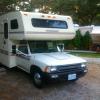
1990 Toyota Warrior track width for hauling?
Ctgriffi replied to deedubs's topic in General Discussion
Rear: 77" Front: 60" -
Glad you found a workable solution and hope the repair goes smoothly. Many/most of the WH units that used the original style valve are probably long gone to the junkyard. But some of us, me included, don't want to let go!
-
We just finished a much-anticipated, week-long trip to Colorado. Two days driving each way, and some business to handle in Denver, so there was not a lot of time for sightseeing (or for snapping photos), but it was still fun to take the old rig out west, see a bit of that fantastic landscape. This US-of-A is just huge, obviously, but I still tend to imagine that 75% of the countryside looks about the same, if you squint... that's definitely NOT the case when you roll up on the Rocky Mountains! We stayed in a few different campgrounds during the week, including "Cherry Creek State Park," which is definitely a unique spot: Cherry Creek is a couple square miles of woodsy and wild-ish space, basically right inside the Denver metro area. The park features tons of wide, smooth bike paths, which was great fun since we brought our e-bikes along on the rear rack. The campground area was beautiful and extremely clean, although I was a bit frustrated to find out that, even after paying the campsite fee + the daily vehicle fee, you still can't take a shower in the bathhouse unless you bring a credit card and pay that fee, too! That just ain't right. But I made-do with the onboard shower, which is a tight fit, in terms of height, but doable. The Warrior held up very well, with no breakdowns and only a few minor issues: the coach water pump stopped working at one point due to a stuck pressure switch, which was a simple fix. More concerning, the 3.Slow began idling a little rough, once we got over 5,000 feet (this also happened when we did a trip to Santa Fe, NM, few years ago). I swapped out the air and fuel filters one evening at the campsite, which seemed to help matters a bit. But once we came back down in elevation, driving east through Kansas, the rough idle smoothed out and never returned. I did however notice a new, pronounced "tick" during the last few hours of our return drive, which I have since diagnosed and narrowed down to a noisy injector—pretty common occurrence in the 3VZE, apparently. I'm shooting some Lucas Upper Cylinder Lubricant in the fuel tank to see if it'll quiet things down. Overall fuel mileage for the trip was 12.7mpg, with two adults, two folding e-bikes, 65lbs of dogs, and quite a bit of gear + food. Speaking of Kansas, they have some excellent highways that were a pleasure to drive. I-70 in that state was in terrific condition and, man, I harp on this every time, but it DOES make a huge difference! Preaching to the choir, I know, but road surface and tailwind-vs-headwind become all-important when you're driving a 30+ years, overloaded, little pickup on a long roadtrip. (Surprisingly, we came across some really rough pavement in Colorado, especially on the interstates, which I did not expect.) I know that not everyone loves the unending flatness of central Kansas, but I think The Plains have a pretty special feel about them. We enjoyed traveling through that area and spending a night on the lakeshore at Wilson State Park. Overall, a very good, successful trip but just not enough free time to do what we'd like to do: cruise more back-roads, stop at small town museums and attractions, see more wildlife, etc. Retirement's still a long ways off, but maybe we'll make it back out there again someday, with more time to kill.
-
I went through the same thing a year or two ago on my 91 Warrior. Old valve stopped working right; wouldn’t shut off automatically anymore, and scorched the fiberglass surrounding it, before I noticed! I found a replacement from rvpartscountry.com at the time, which has worked well (note: quite difficult to remove the old one!). No idea if they have more in stock. Mine looks like the first photo you posted, and here’s the order description: 91602 Atwood 91602 Robertshaw Thermostat with a Three Eight Inch NPT inlet and with a Three Eight NPT Outlet Water Heater
-
I vaguely remember the issue you've described, when I did this job on mine, couple years ago. You're right, of course, that brackets on the new shocks don't quite match the spacing of the mounting points on the lower control arms. But if you snug 'em down they work just fine, which is probably why most haven't thought to mention it. I didn't really worry about it honestly and haven't noticed any problems, although I like what you've done adding the big washers—looks good.


